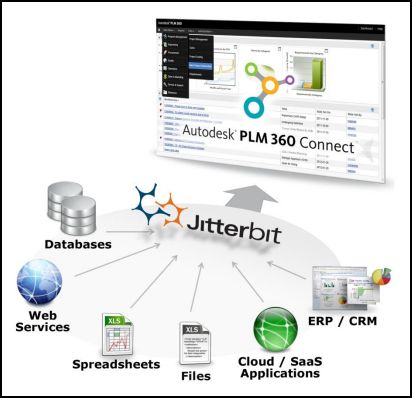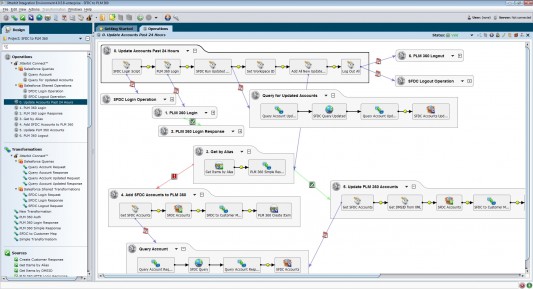New Autodesk PLM 360 Connect offers business application data integration. Jitterbit has backed away from its open source roots.
Autodesk has created an alliance with data integration specialist Jitterbit to create a product that allows Autodesk PLM 360 users to integrate their PLM data with other business application data. A new product, Autodesk PLM 360 Connect, is based on Jitterbit technology yet matches the Autodesk approach to PLM set-up with cloud-based drag-and-drop application development.

Jitterbit is well known in enterprise integration circles, having working relationships with most of the leading vendors of enterprise resource planning (ERP) and customer relationship management (CRM) software. The company started by offering the basic SaaS solution as open source, but in 2010 started releasing commercial applications, forking the open source with a second commercial version. As Jitterbit CEO George Gallegos said in an online dialog in 2011, “While we began life as an open source company, in the past few years we’ve transitioned into a commercial company that sponsors an open source project.” The new Autodesk suite is based on the commercial version.
Autodesk PLM 360 Connect is designed to make it easy to connect product lifecycle data with sales, financial, supply chain, and other business data housed in either cloud-based or on-premise systems. The goal is to provide Autodesk PLM 360 users with a single view of all related customer and product information, and to analyze and use it more efficiently.
Jitterbit offers a graphical user interface similar to Autodesk PLM 360, calling it a “no coding” integration solution.
A detailed data sheet on Autodesk PLM 360 Connect is available at the Jitterbit web site.
Our take
Jitterbit is popular in ERP and CRM circles, especially among those who have already committed to cloud-based solutions. More than 60% of its business is with accounts standardized on cloud-based Salesforce.com.
Autodesk needs a few more deals like this, to extend and expand an emerging cloud-based ecosystem and make PLM 360 more alluring. Being a cloud-based solution—where the foundational stack issues are taken care of by Autodesk—the size of a supporting ecosystem can be much smaller than that of its rivals, who are still tied to elaborate in-house systems.

Related
Autodesk buys Inforbix PLM search technology
Roulunds Braking happy to be in the Autodesk 360 PLM camp
Autodesk launches cloud-based PLM





